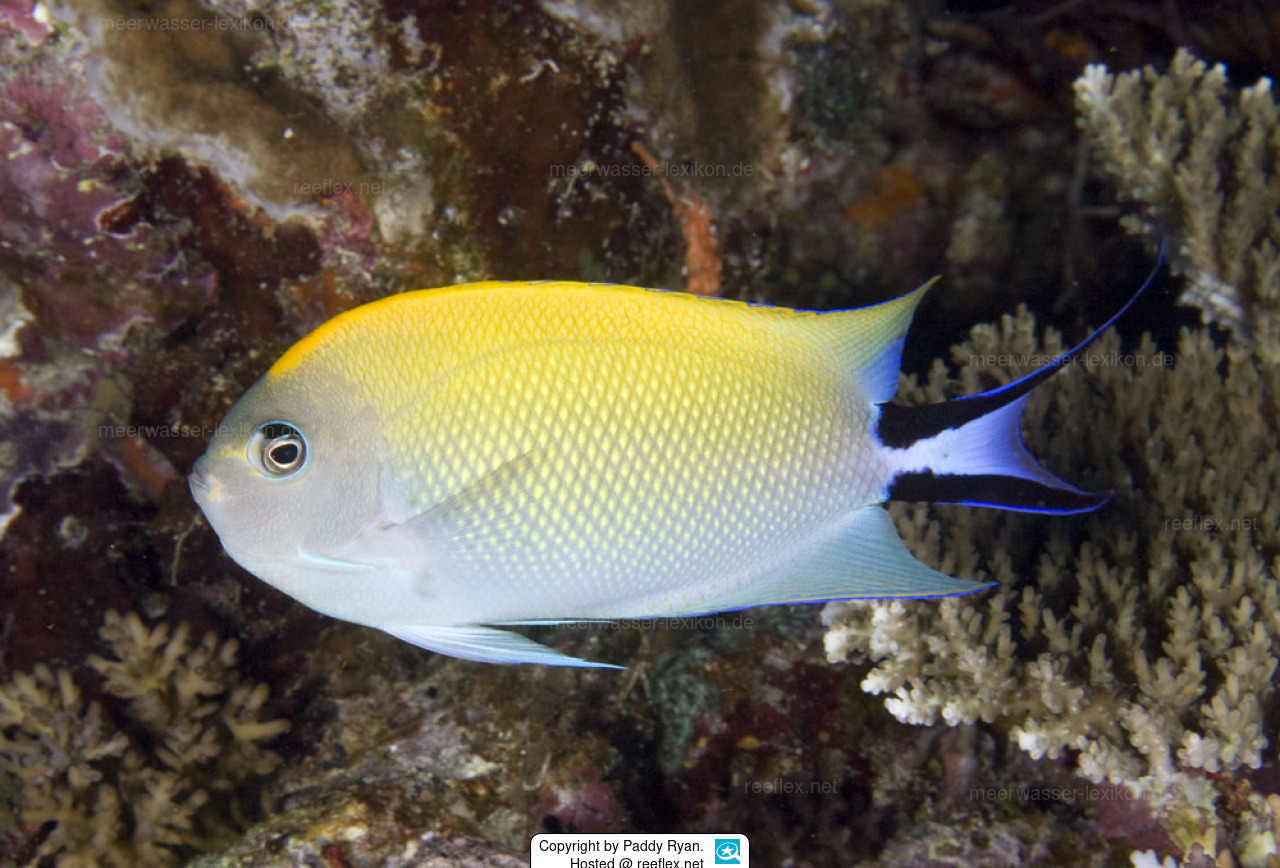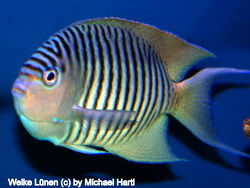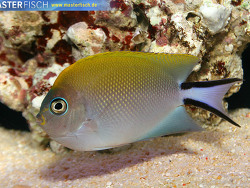Info
Genicanthus melanospilos also known as Swallowtail Angel, Melanospilos's Angelfish, Spotbreast Angelfish and Blackspot Angelfish is one of the more brightly colored of its genus with a highly-flared tail. The Swallowtail Angel is found in tropical marine waters of the Western Pacific, from Malaysia, north to Japan, south to Australia and east to Fiji.
The Swallowtail Angelfish prefers steep fore-reef drop-offs which encompass reefs or rocky bottoms. In small aggregations swimming close to the bottom, along the deep reef, especially along slopes or at the reef basis. It is unusual to find over a sand or silt bottom or in shallow water.
Genicanthus melanospilos is one of the few angelfish to exhibit dramatic sexual dimorphism. The female is yellow dorsally, and light blue ventrally. The caudal fin is marine-blue highlighted by a dark, blue-black edging on the top and bottom. The male is a pale yellow, with multiple thin, dark, vertical stripes. The dorsal, anal and caudal fins have yellow spots. The caudal fin is lunate.
They are planktivores, feeds like all of his genus mainly on plankton, crustaceans, polychaete larvae, although the majority of their diet in the wild consist of pelagic tunicates. Genicanthus melanospilos needs a varied diet and numerous feedings per day in captivity. Feed prepared and frozen foods like krill, raw table shrimp, squid, clam and mussel. It is also a good idea to occasionally supplement with some type of herbivore diet containing marine algae and supplement with a sponge fortified formula for Angelfish.
Most angelfish are not known as reef-safe but angels from the genus Genicanthus will leave your corals and sessile invertebrates alone. There are not many angelfish appropriate for the reef tank, of the ones that are, Genicanthus melanospilos is like all of his genus one of the best and well suited for the reef aquarium.
Synonyms:
Genicanthus melanospilus (Bleeker, 1857)
Genicanthus zebra (Lienard) Sauvage, 1891
Holacanthus melanospilos Bleeker, 1857
Classification: Biota > Animalia (Kingdom) > Chordata (Phylum) > Vertebrata (Subphylum) > Gnathostomata (Superclass) > Pisces (Superclass) > Actinopterygii (Class) > Perciformes (Order) > Pomacanthidae (Family) > Genicanthus (Genus)
hma







 Dr. Paddy Ryan, USA
Dr. Paddy Ryan, USA
























